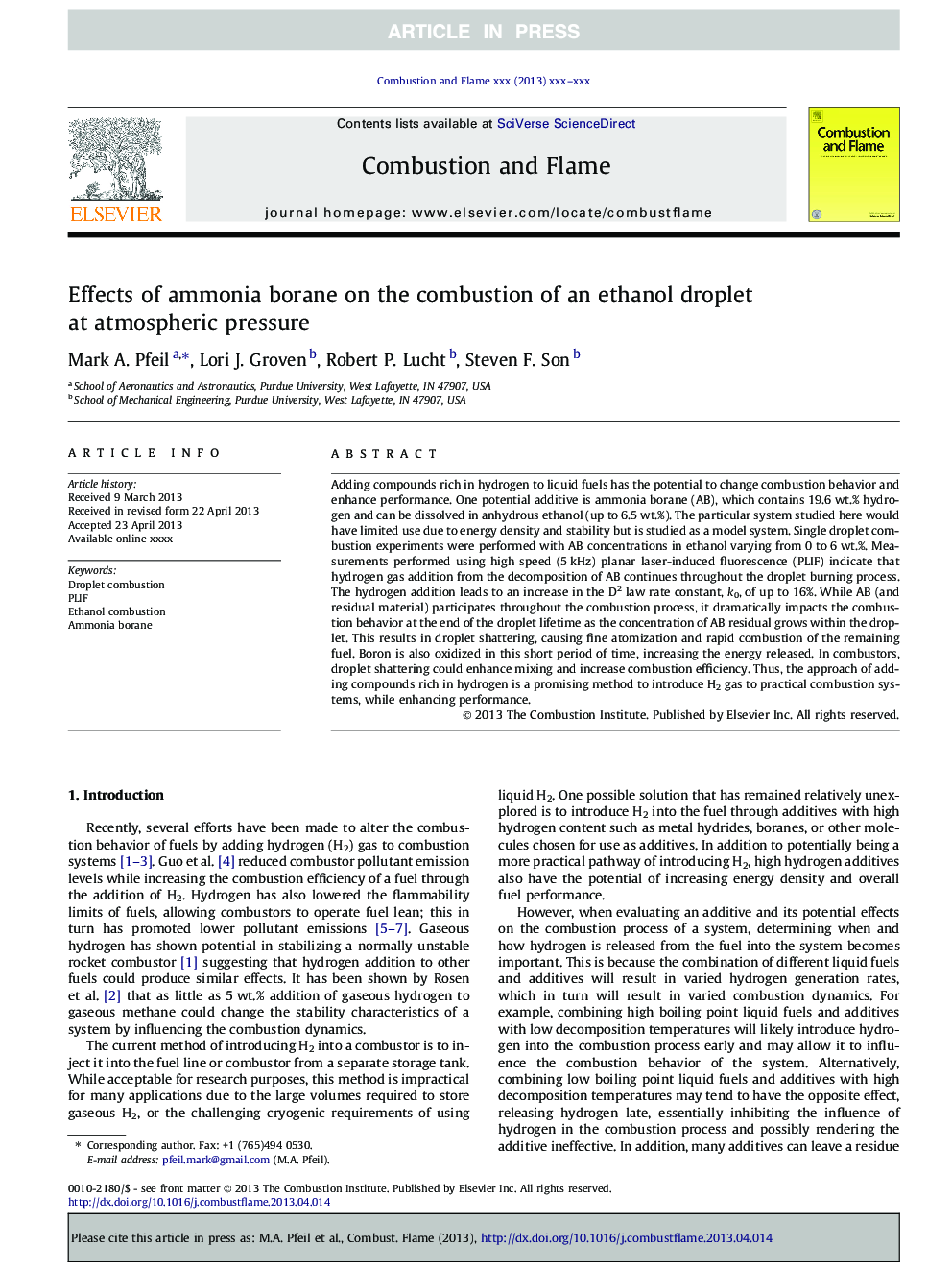| Article ID | Journal | Published Year | Pages | File Type |
|---|---|---|---|---|
| 10264819 | Combustion and Flame | 2013 | 10 Pages |
Abstract
Adding compounds rich in hydrogen to liquid fuels has the potential to change combustion behavior and enhance performance. One potential additive is ammonia borane (AB), which contains 19.6Â wt.% hydrogen and can be dissolved in anhydrous ethanol (up to 6.5Â wt.%). The particular system studied here would have limited use due to energy density and stability but is studied as a model system. Single droplet combustion experiments were performed with AB concentrations in ethanol varying from 0 to 6Â wt.%. Measurements performed using high speed (5Â kHz) planar laser-induced fluorescence (PLIF) indicate that hydrogen gas addition from the decomposition of AB continues throughout the droplet burning process. The hydrogen addition leads to an increase in the D2 law rate constant, k0, of up to 16%. While AB (and residual material) participates throughout the combustion process, it dramatically impacts the combustion behavior at the end of the droplet lifetime as the concentration of AB residual grows within the droplet. This results in droplet shattering, causing fine atomization and rapid combustion of the remaining fuel. Boron is also oxidized in this short period of time, increasing the energy released. In combustors, droplet shattering could enhance mixing and increase combustion efficiency. Thus, the approach of adding compounds rich in hydrogen is a promising method to introduce H2 gas to practical combustion systems, while enhancing performance.
Related Topics
Physical Sciences and Engineering
Chemical Engineering
Chemical Engineering (General)
Authors
Mark A. Pfeil, Lori J. Groven, Robert P. Lucht, Steven F. Son,
